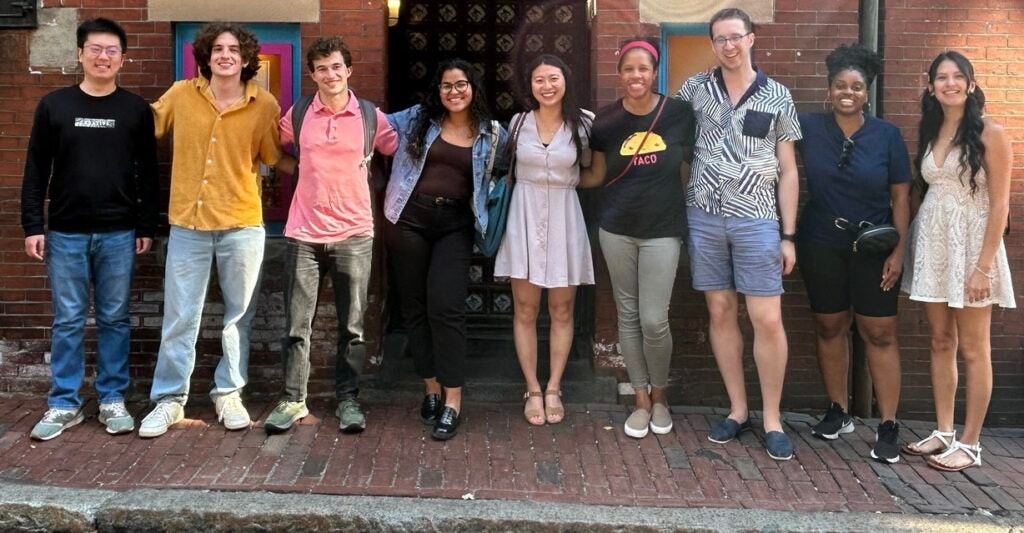Stephenson Lab
The Stephenson Lab focuses on the development and application of statistical methods to best analyze high-dimensional exposures and its impact on population health.
655 Huntington Ave, Boston, MA 02115
Biostatistics Department
Welcome to the Stephenson Lab
The Stephenson Lab has developed a research program that centers on model-based clustering of high-dimensional exposures that will improve our understanding of population health disparities. We are intentional in focusing on populations that are often marginalized, undersized or excluded from standard population health analysis.
To achieve this, we work on the development of new and robust methods that extend beyond the current existing set of tools, adapting them to accommodate different study designs and data structures.
What We Do
Our methodological work has centered on model-based clustering of high-dimensional exposures with a focus on vulnerable, historically excluded, and hard-to-reach populations. This work is layered with the need for methods to address the complexities of data exposure types (e.g. diet, chemicals), as well as the study design (e.g. cohort, longitudinal, survey, case-cohort) from whence these exposures are collected. Population health disparities is predicated on a subpopulation at greatest risk with significant gaps in various health outcomes. A deeper understanding of the complexity in these exposures associated with these outcomes is needed to better address the needs of this targeted population.
Through collaborations in and outside of Harvard, Dr. Stephenson has continued to build up her research program to improve the analysis of: (1) nutrition epidemiology, (2) cancer disparities, (3) cardiovascular disease epidemiology and disparities. Across Harvard Chan, Dr. Stephenson has formed collaborative relationships with members in the departments of nutrition, health policy and management, epidemiology, and social and behavioral sciences. Dr. Stephenson has established relationships with clinicians at Brigham and Women’s Hospital, and built methodological collaborations with colleagues at University of Michigan, Brown University, New York University, and University of North Carolina at Chapel Hill.
Support Harvard Chan School
Every gift contributes to our mission of building a world where everyone can thrive. To learn more about how you can support the Stephenson Lab, please contact the Harvard Chan Development Office.
